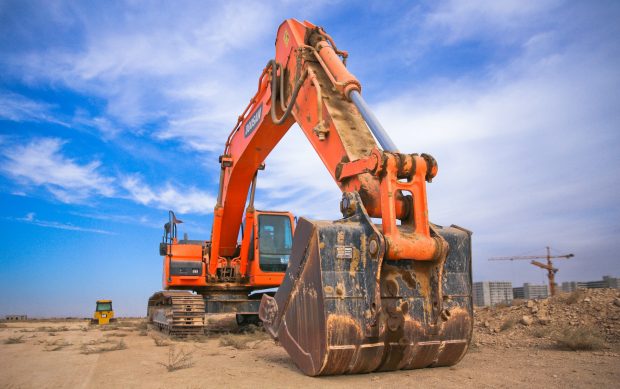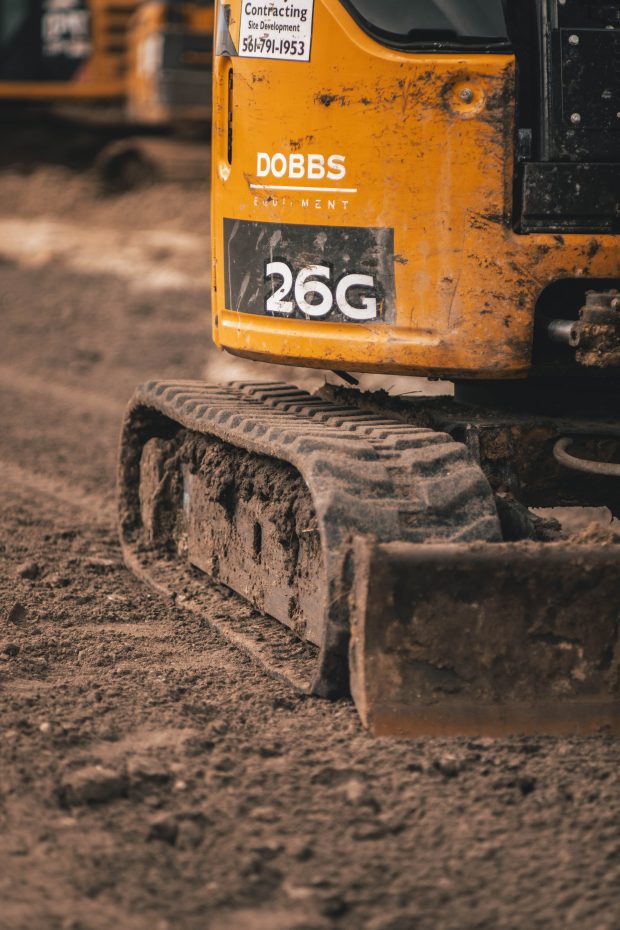Heavy construction equipment refers to heavy-duty vehicles, designed to execute construction tasks. It is necessary for various purposes but operating with such heavy equipment can be challenging and dangerous. Among the safety guidelines for workers that operate such heavy machinery, there are also tips on how to protect the equipment itself when working in tough conditions.
Note that once you purchase a machine, it’s best to keep it functional for as long as possible. If not properly maintained it can easily malfunction. Although each machine has a specific maintenance regime, there are a few general practices you can implement to ensure it is working well.

Use protection mats
Working with heavy equipment in tough conditions requires a more solid working surface than the worksite provides. Lawn protection mats are perfect for securing your equipment as well as the environment or any other delicate surface. This gives traction to your vehicle, helping you avoid being stuck in muddy work sites.
By laying a strong temporary foundation, you provide a secure base for your heavy equipment. It’s a great solution to keep your heavy machinery working well even in difficult conditions. These mats displace the weight of the equipment to help ensure a solid foundation for it and reduce the impact it makes on the ground below.
Cleaning and lubrication
Just as you clean your handheld tools regularly, you should also preserve heavy equipment in good working order. The buildup of dirt usually interferes with the functionality of tools, so the same applies to heavy-duty machinery. Don’t underestimate the amount of dirt on it because of its size.
If you neglect to clean it properly and regularly, the machinery can suffer from a buildup of hard-to-remove coatings. Remember, heavy equipment is usually used outside, which means sun, rain, and wind can do real damage. Additionally, the engines and motors in heavy equipment require regular lubrication, the same as auto engines benefit from regular oiling and greasing.
Check fluid records and misalignment
Keep in mind that not all items of heavy equipment use fluids. For the ones that do, you need to monitor their fluid levels regularly if you want to keep the machines up and running. Fluids such as diesel fuel, hydraulic fluid, engine and transmission oil, coolant, etc., are extremely important for your machine.
These fluids need exceptional care, so you must read the manual, follow storage procedures develop a proactive system, and consider fluid analysis. You must also check misalignment since rough terrains in which heavy machinery routinely operates may cause burdens on its alignment. Note that securing proper alignment is essential to keep your equipment in good shape.
Protect electrical wiring
Since the requirements of the construction industry have changed, now we have built-in computers in excavators, backhoes, dozers, and other heavy machinery. This is a great step in improving the precision of the operations, along with enhancing safety on the site and increasing productivity. However, all these electronics can make your machine temporarily useless if they’re damaged.
You should pay particular attention to protecting electrical wiring on heavy machinery from exposure to the elements. Make sure you cover the equipment with a protective tarp or shelter it under a covering to prevent unnecessary wear and tear on its electrical components. Rain and melting snow can leak inside the machinery during field operation and if it’s not properly protected it can drastically shorten its productivity and lifetime.
Maintain operational records
One of the most helpful steps in the regular maintenance of heavy equipment is keeping complete and accurate records. Since large machinery is usually transported from site to site and used by multiple operations, it’s difficult to determine when, where, and how a malfunction occurred. That’s why keeping a tracking log for your equipment is essential.
By tracking inspections and repairs, outlining protocols involved in servicing each piece of the machinery, companies help preserve the useful working life of the equipment. Also, if you own multiple assets, you’ll need a reliable system to track the location of each piece of equipment. Having a clear overview of the service activities and repairs will help you better organize future maintenance scheduling.
Final thoughts
Since heavy equipment is a large expense, you must take precautions to keep it safe and maximize its life. You should start by checking its fluid levels and cleaning it regularly. Also, consider investing in quality protection mats and maintain thorough records of the repairs and other services. Once you combine these methods, you’ll see their full benefits.




